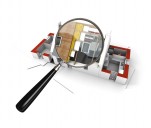Survey Validity Assessment of Tall Buildings Technical Condition

The paper presents the validity analysis of survey, monitoring and the study of cause and effect relationships, which affect safety and robustness of tall building structures. The algorithms to evaluate the risk of obtaining unreliable data on the parameters of structure physical wear processes and the technical state of buildings are reviewed in the study.
The purpose and objectives of detailed field studies to evaluate the robustness and safety of high-rise construction projects are significantly different from the formal procedure of their technical condition survey [1, 2] in accordance with the requirements of regulatory technical documentation (RTD) and design documentation (DD).
According to some unreasonable assumption when a survey is carried out it is supposed that the exact meeting of RTD and DD requirements guarantees the required survey validity [3, 4].
The materials of several thousand robustness and safety surveys of construction projects known to the authors lack an essential section confirming that tools used in the survey (methods, procedures, equipment, and instrumentation) ensure that the risks of obtaining unreliable survey results do not exceed the risks of surveyed project failures allowed in the regulatory documentation. For example, for critical construction projects including tall buildings, the risks of failures during the guaranteed period of their operation should not exceed the values of the 10-6–10-7 range per year.
Full content of this issue you can read here
The full version of the article can be read in our printed issue, also you can subscribe to the web-version of the magazine
 Text by J.G. MOGILUK, M.S. HLYSTUNOV, THE CENTER FOR FUNDAMENTAL AND APPLIED RESEARCH OF RELIABILITY OF CONSTRUCTION PROJECTS, THE DEPARTMENT OF APPLIED MECHANICS AND MATHEMATICS AT MOSCOW STATE UNIVERSITY OF CIVIL ENGINEERING (NATIONAL RESEARCH UNIVERSITY)
Text by J.G. MOGILUK, M.S. HLYSTUNOV, THE CENTER FOR FUNDAMENTAL AND APPLIED RESEARCH OF RELIABILITY OF CONSTRUCTION PROJECTS, THE DEPARTMENT OF APPLIED MECHANICS AND MATHEMATICS AT MOSCOW STATE UNIVERSITY OF CIVIL ENGINEERING (NATIONAL RESEARCH UNIVERSITY)


